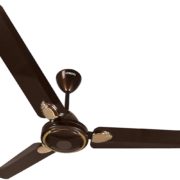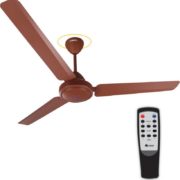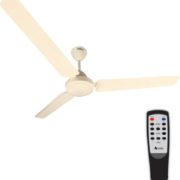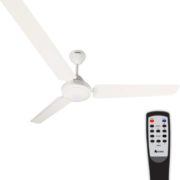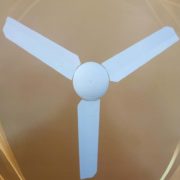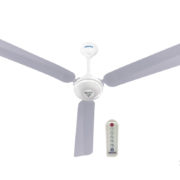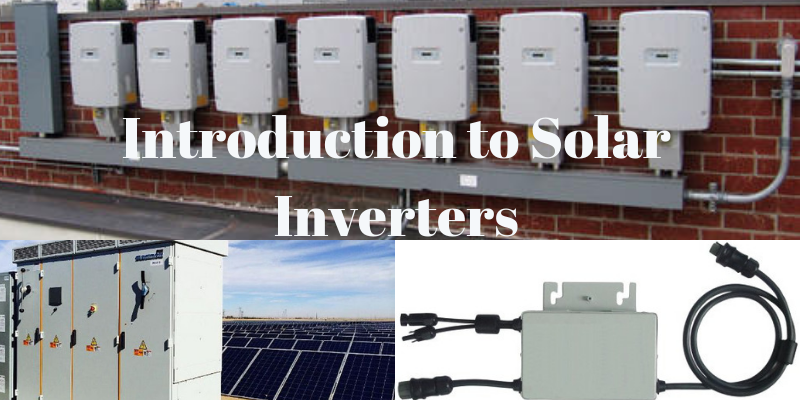The journey of Energy Efficiency in Ceiling Fans
Ceiling Fans are one of the most widely used appliances in India. India, being a tropical country is usually hot or warm for most part of a year. It is estimated that there are around 400 million fans in India running for around 7 hours a day. The average power consumption is understood to be around 40W considering the various speed levels that may be used. This translates to around 1,12,000 MU being consumed everyday leaving a huge potential for energy efficiency.
The energy efficiency in fans have come a long way. A typical ceiling fan which has an induction motor consumes anywhere between 70 – 80 Watts. Initially, the Bureau of Energy Efficiency, BEE, Government of India, introduced star labeling for ceiling fans. The parameters tested for star rating are
- Air Delivery
- Fan Speed
- Power Input
The maximum rating an appliance can get is 5 star. In ceiling fans, the rating is obtained based on the service value.
Star Rating Index Calculation for Ceiling Fans
Service Value of BEE Star Rated Fans
| Star Rating | Service value for ceiling fans* |
|---|---|
| 1 Star | >= 3.2 to < 3.4 |
| 2 Star | >=3.4 to < 3.6 |
| 3 Star | >= 3.6 to < 3.8 |
| 4 Star | >=3.8 to < 4.0 |
| 5 Star | >= 4.0 |
*All ceiling fans covered under this standard shall comply with minimum Air Delivery of 210 cu m/min.
Service value is calculated by dividing the air delivery by the power consumption. A typical five star fan consumes 50 watt of power on an average.

BLDC FANS
BLDC Fans are the most energy efficient fans available as of now. BLDC fans are nothing Brush Less DC Fans that saves up to 65% of the electricity when compared to conventional fans. These BLDC fans that are available in the market consumes power in the range of 28 – 38W. They have a service value of above 6 and are different from the conventional fans which has induction motors. BLDC fans have Brushless DC motor which works on DC. Though the input power is AC, the power is converted to DC through SMPS. BLDC fans conists of three major components
- Stator
- Rotor and
- Electronic components


The presence of permanent magnets in BLDC fans make it energy efficient. Since the component has electronic circuit, it is easy to add more features. The BLDC fans need no regulators to control the speed. The speed can be controlled via a remote controller. Some of the key benefits of the BLDC fans include lower power consumption, high speed, stable speed, high power factor. The installation procedure is very simple and easy.
The following are some of the important parameters that are to be considered while buying BLDC fans.
Span
Span is the total diameter of the fan while circulating.The typical span range is 900mm, 1040mm, 1200mm and 1400mm
Speed
Speed is calculated in terms of RPM (Revolution per Minute). Higher the RPM, higher is the air flow. Lower wattage BLDC fans have a high speed and higher wattage BLDC fans have a relatively lower speed. The speed range between 270 – 450 RPM.
Service Value
As explained above service value is calculated by dividing the air delivery by the power consumption. The service value of BLDC fans is in the range of 6 to 7. Higher the value of service value, greater is the efficiency.
Input Voltage (V)
BLDC fans usually have a wide voltage range between 140V – 285V/ This helps in maintaining the performance even during low voltage.
Power Consumption (W)
Power Consumption of BLDC fans is as low as 28W and the maximum power consumption is 38W. Some industry specific models fall the higher power consumption category.
Frequency (Hz)
The frequency range is between 48 – 52.
Air Delivery (CMM)
Air delivery is the amount of air swept by the fan. It is measured in cubic meters per minute. The CMM ranges between 200 – 270.
Power Factor (PF)
Power factor BLDC fans are not less than 0.98. If the power factor is close to unity, then the efficiency will be higher.
No. of Blades
Blades are the number of wings that a fan has. BLDC fans usually have three blades. The blades of BLDC fans are better designed to improve the performance.
Remote Control
BLDC fans do not need the manual regulators to vary the speed. They have remote controls with various features like speed control, On- Off, timer and sleep mode.


